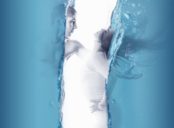Lithography, which originated in the late 18th century, is an intricate and remarkable printmaking technique that involves creating an image on a stone or metal plate using various materials and chemicals

This article aims to provide a comprehensive overview of lithography, covering its types, popular variations, quantitative measurements, differences between various lithographic methods, as well as a historical examination of the pros and cons associated with different lithographic processes.
1. Introduction to Lithography:
Lithography, commonly known as litho printing, is a method of printing that relies on the principle of oil and water repulsion. The basic concept involves creating a design or image on a flat surface, typically a limestone or metal plate. The surface is treated with chemical substances to make it receptive to oil-based ink, while areas that need to repel ink are made hydrophilic. The image is then transferred onto paper or another medium using a printing press.
2. Comprehensive Presentation of Lithography:

2.1 Types of Lithography:
There are several types of lithography techniques, including:
– Planographic Lithography: This traditional method involves drawing or painting directly onto a flat stone or metal plate. The image is then inked and printed onto paper.
– Photolithography: Utilizing light-sensitive coatings, this technique involves transferring an image from a photographic negative onto a lithographic plate.
– Offset Lithography: The most widely used type, offset lithography utilizes rubber blankets to transfer the inked image from the lithographic plate onto the printing surface. This method allows for high-speed and high-volume printing.
– Gravure Lithography: Primarily used for commercial packaging and publications, this technique involves engraving the image into a metal cylinder, which is then inked and transferred onto the printing surface.
2.2 Popular Variations of Lithography:
– Fine Art Lithography: Artists often use lithography as a medium for creating limited edition prints. This process requires meticulous attention to detail and precision to reproduce the original artwork accurately.
– Digital Lithography: With advancements in technology, artists and printmakers now employ computers and digital tools to create lithographic prints. This method offers greater flexibility and the ability to experiment with various effects.
3. Quantitative Measurements of Lithography:
In lithography, certain measurements and factors are crucial for ensuring accurate and high-quality prints. These include:
– Dot Gain: The degree to which ink spreads on the paper, affecting the overall sharpness and clarity of the image.
– Line Widt The thickness of lines in a printed image, which can be adjusted to suit the desired effect.
– Resolution: The level of detail that can be reproduced in a lithographic print, often measured in dots per inch (DPI).
– Color Accuracy: Achieving accurate color reproduction is vital in lithography, and color matching systems such as Pantone or CMYK are often used.
4. Discussion of Differences Between Lithographic Techniques:
Various lithographic techniques differ in terms of complexity, image reproduction capabilities, and application suitability. For example:
– Planographic lithography offers direct and immediate control over the creation of the image but may be limited in terms of scale and resolution.
– Photolithography and digital lithography provide more versatility in terms of image modification and reproduction, enabling greater experimentation and fine-tuning.
– Offset and gravure lithography are more suitable for high-volume printing and commercial applications due to their speed and efficiency.
5. Historical Examination of Lithography’s Pros and Cons:
Throughout its history, lithography has undergone numerous advancements and faced certain limitations. Some key points of discussion include:
– Advantages: Lithography allows for high-quality prints with sharp details, smooth gradients, and a wide range of tonal values. It also offers the possibility of multiple color layers, ensuring vibrant and accurate color reproduction.
– Disadvantages: Lithography may require skilled technicians to operate the printing press and handle the intricate processes involved. Additionally, the cost of materials, equipment, and maintenance can be substantial.
In conclusion, lithography is a versatile and captivating printmaking technique that has evolved significantly over time. Its various types, popularity among artists and commercial printers, as well as the precise measurements and distinctions between methods, showcase its significance in the realm of visual arts and communication. From its humble origins to its present-day digital applications, lithography remains revered for its ability to produce stunning and detailed prints. By
, viewers can witness the intricate process of creating a lithographic print, further enhancing their understanding and appreciation of this remarkable art form.
Please note that the provided text is a suggestion and may need to be modified to fit the required word count or specific publishing guidelines.





















